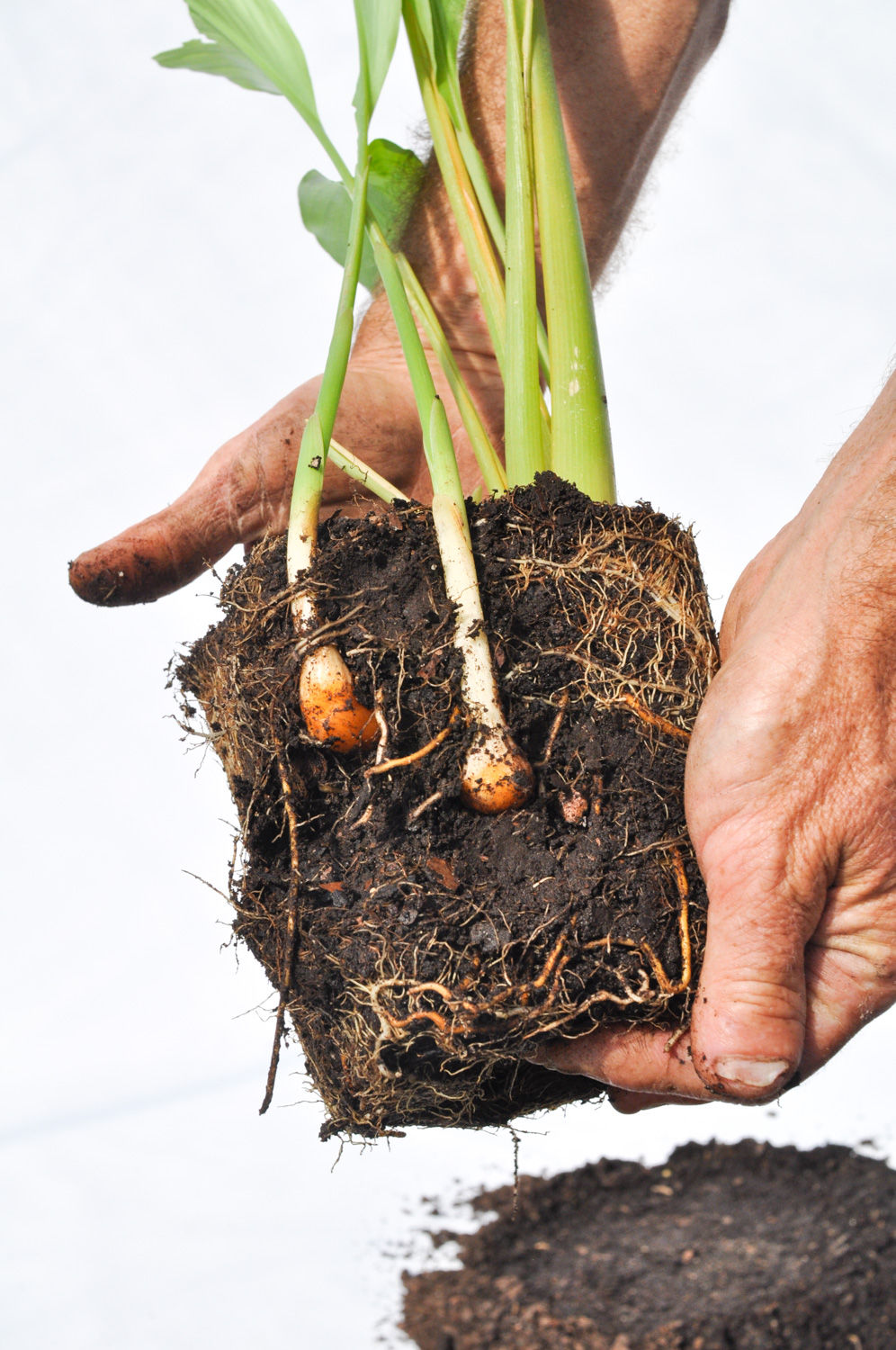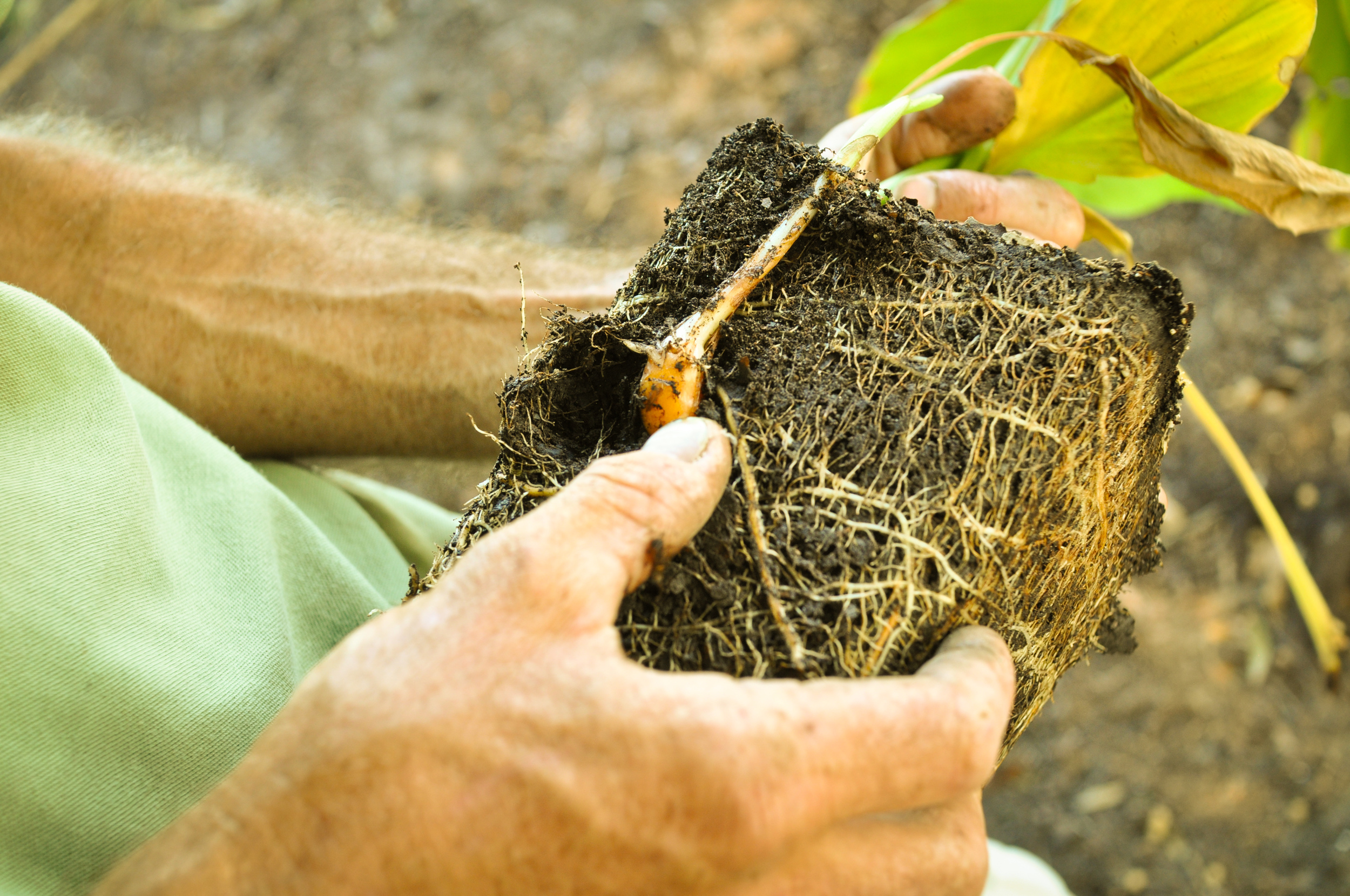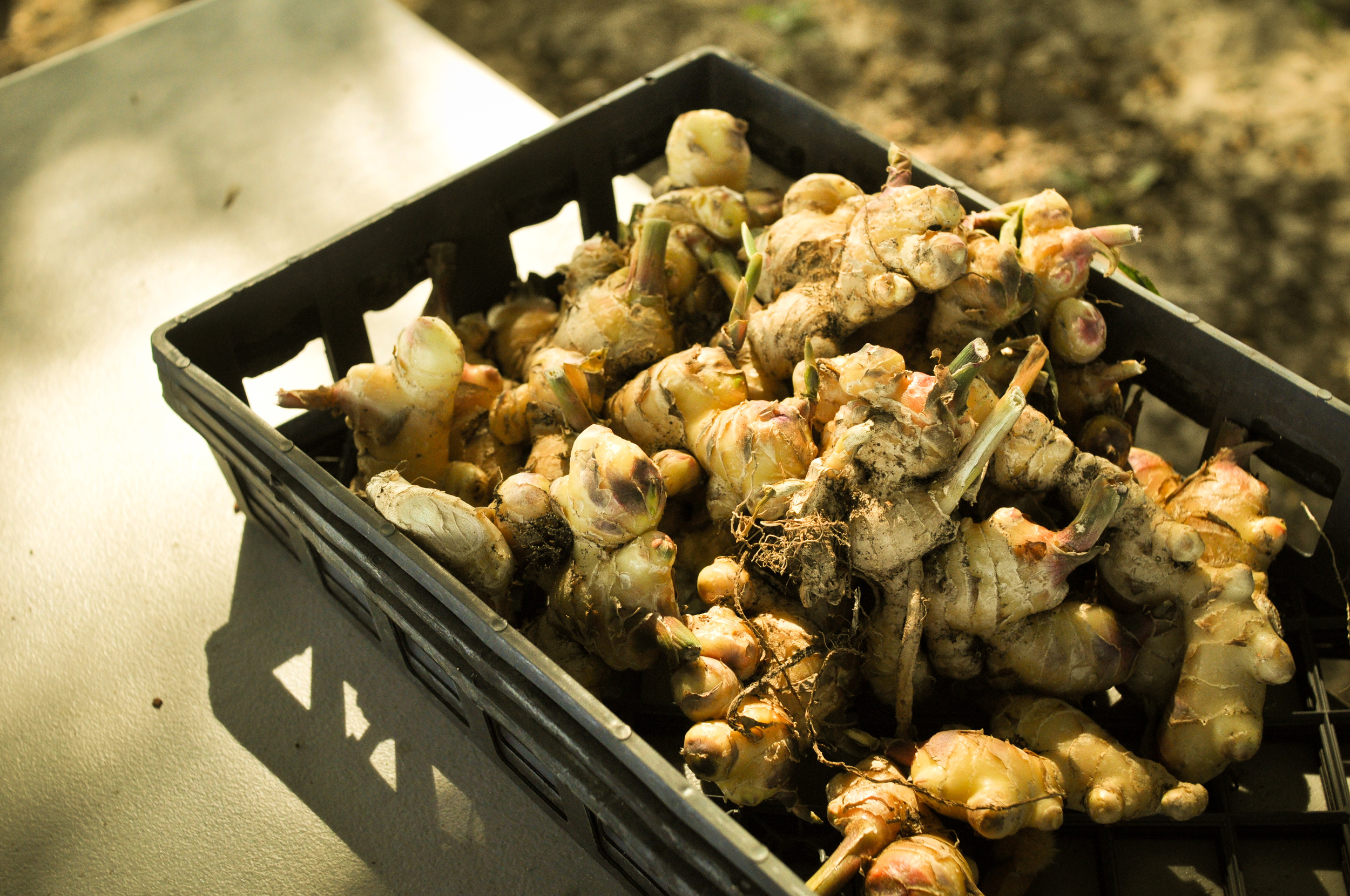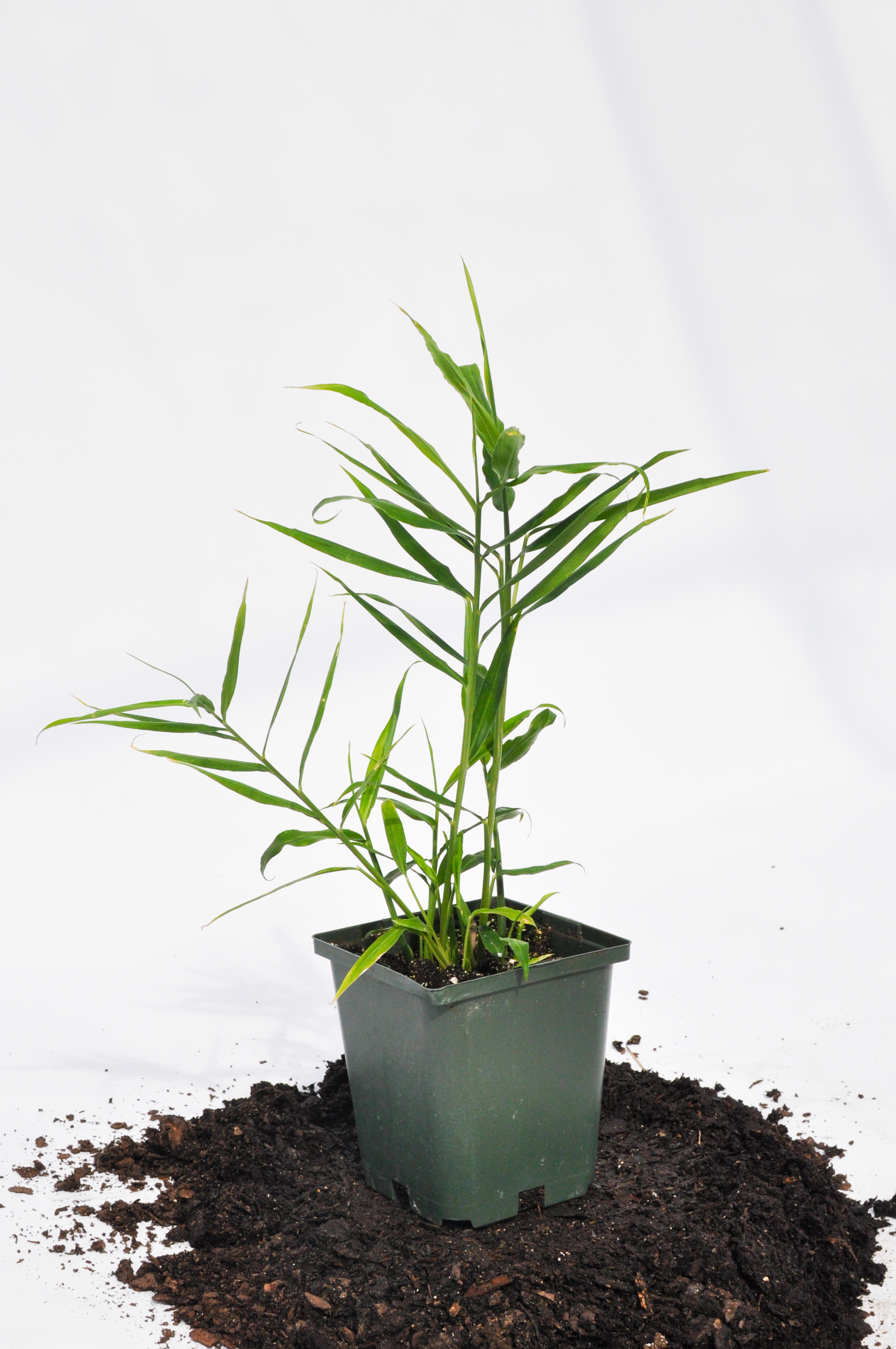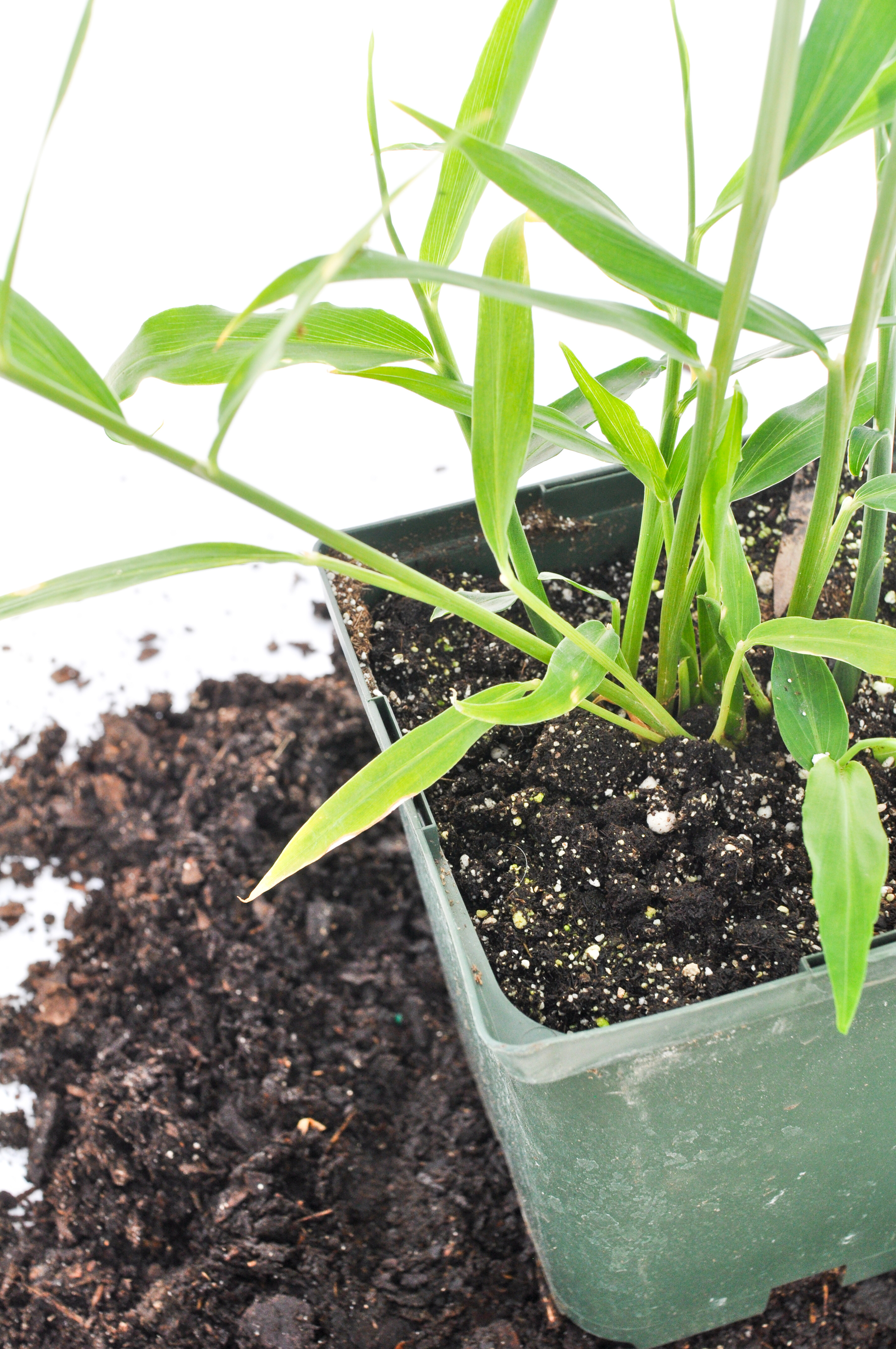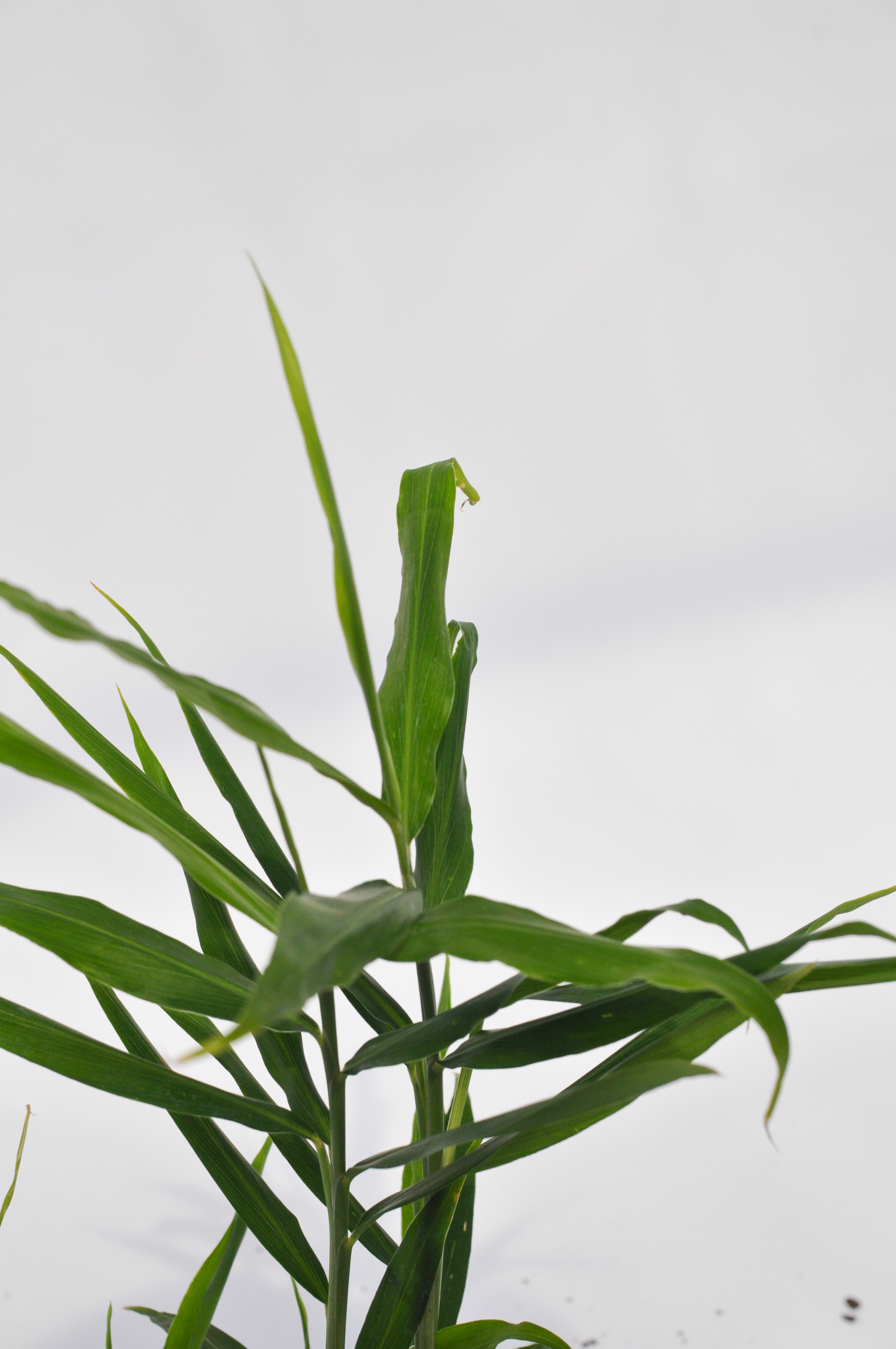"Curcuma longa, CURCUMA CAESIA, CURCUMA amada"
& "Zingiber officinale"
ORANGE TURMERIC, BLACK/PURPLE TURMERIC, WHITE TURMERIC/MANGO GINGER & YELLOW GINGER
Turmeric Root
benefits The Powerful Healing Root
Medicinal purpose:
The health benefits of turmeric are versatile; an antiseptic, antibacterial, lowers cholesterol, anti-inflammatory, treats arthritis, psoriasis, headaches and even blood clots. It has been touted for its ability to kill cancer cells, among other possible health benefits. Incredibly easy to grow, multiplying vigorously without much help. Used medicinally in many modalities of healing, also as a dye and as a culinary spice for curries & rice.
Turmeric is also used for aging dogs and horses in order to help on joint issues and other related age health issues.
“We sell to individuals but we also sell bulk to businesses like juice bars, health food stores, produce stores and other farms.”
USDA Hardiness Zones (which zone am I?): 8-11 (in ground), 5-11 (in containers)
Deciduous/Evergreen: Deciduous
Plant Type: Perennial
Years to Bear Fruit & Edible Qualities: Root/rhizome are edible and consumed medicinally and in teas. Leaves are edible and used to wrap meats, fish and vegetables while baking.
Full Size: Leaves will get up to 3’-4’ high depending on root mass
Cold Tolerance: Dormant overwintering, can be grown as long as the ground does not freeze. If heavy frosts are likely in cold temperate climates, rhizomes can be dug up and stored in a cool dark place. Mulch with loose bedding for additional cold protection.
Light Requirements: Shade Preferred with morning and early evening sun.
Drought Tolerance/Watering: Handles drought and flooding, water needs based on location. More sun, more moisture needed.
Soil & Site Requirements: We recommend planting ginger in containers or keep it less invasive in the garden with supervision. Avoid burnt tips on the leaves by ensuring shade from mid-day summer sun and provide supplemental watering during droughts.
For Prices please view our price list here.
Culinary uses and recipes
* Piperine, a key chemical in black pepper, enhances bioavailability of turmeric.
Fresh roots
Hand-harvested and ships fresh.
- Grating
Fresh turmeric is less bitter than dried turmeric.
instructions
To successfully use fresh turmeric, wash the root of any dirt and scrub it well. You don't need to peel the turmeric, though some people prefer to.
Grate it with a microplane, ginger grater or the small side of a cheese grater.
It can also be smashed with a garlic press or pestle and mortar.
- juicing
A fresh juice that harnesses the power of fresh turmeric root to soothe inflammation, aid in cleansing the body and fight illness. Packed full of anti-oxidants, anti-inflammatory agents and healing compounds, this delicious Turmeric root juice is a healing elixir for the whole body. Plus, it just tastes good!
ingredients
2 tablespoons sliced ginger
1 tablespoon fresh turmeric root
4 medium organic carrots
2 small golden beets ( 2-3 inches in diameter), trimmed, quartered (optional, or sub 1 more carrot)
1 apple- cored, quartered ( or sub one orange, peeled)
instructions
Juice ingredients in the order listed.
Divide between two glasses and serve immediately.
- Fermenting
Makes a great skin toner. You can create a nutritional boost with three ingredients.
ingredients
2 tab1 tablespoon coarsely grated turmeric root and/or ginger root (powdered ginger or turmeric may be used, but the fermentation process is a bit slower and may require added "food" - see below)
1 tablespoon sugar ( refined or unrefined ) / If you want to use honey is 2 tablespoons
3/4 cup filtered water
instructions
Place the freshly grated turmeric and/or ginger in bottom of wide mouth quart jar.
Add sugar. (If using powdered turmeric, consider adding a bit of apple peel to encourage the fermentation process.)
Add water and stir.
Cover with cloth and rubber band.
Place on shelf out of direct sunlight.
After 24 hours add 1 tablespoon grated turmeric, 1 tablespoon powdered turmeric, and/or 1 tablespoon grated ginger.
Add 1 tablespoon sugar. Stir well.
Replace cloth cover and leave on shelf.
Every 24 hours add 1 tablespoon turmeric or ginger, and 1 tablespoon sugar until you see bubbles on the surface of the water. This generally takes several days.
You may add additional water if desired. I have done it both ways with success in each case.
Strain and use in recipes or store in refrigerator. You may keep this ongoing and not refrigerate it. (This is a perpetual bug where some of the liquid is used for a recipe and the remainder is fed with root/powder, sugar and water.)
make & use of powder
Fresh turmeric has a short shelf life and you have to immediately dry and powder it. It also takes a longer time to dry. Even dried turmeric needs a good amount of sunlight to get crisp. If it is not dried crisp, you will not be able to powder it finely and it will spoil easily.
Sun drying instructions
The turmeric has to be broken into small pieces before drying, this makes it easier for it to dry completely. We use a special instrument for breaking it, but you can use any hard instrument to break it into small pieces.
Spread the broken pieces on a plate and cover it with a mesh to prevent dust settling on top. Sun dry until the turmeric is very crisp or your turmeric powder will spoil easily.
Grind it in a spice or coffee mill. Sieve it and then grind the left overs again to a smooth powder. Make sure to grind it immediately after it has sun dried and while it is still crisp. This makes it easier to grind it finely.
After grinding the turmeric powder, spread it on a plate to cool completely. Once cool, tightly pack the powder in airtight glass bottles and store it in a cool place.
dehydrator instructions
The dehydrator is by far the easier process and gives a superior result. It is a much brighter color and it dries more evenly.
Place your rhizomes into a pot and cover with cold water, ensuring that there is around 2 cm of water covering it all. Bring to the boil, and then simmer until you can easily push a skewer through the rhizome. Be careful not to overcook them because it will draw out to much goodness and color from the rhizomes into the water. 25 to 30 minutes should be fine. Cooking the rhizomes breaks down the fibers, and evens up the color.
When they are cool enough to handle, cut into even slices. Place a single layer onto your drying trays and stack them onto your dehydrator. I dried them at 70 degrees Celsius for close to 15 hours until the pieces ‘snap’.
conventional oven instructions
Boil from 25 to 30 minutes.
Cut into even slices. Spread the sliced Turmeric evenly onto a tray lined with baking paper.
Place the tray into a pre-heated oven that is set to 180 degrees for one and a half to two hours. Turn them after 30 minutes and check again every 20 minutes to make sure that they don’t burn. Dry them until the pieces easily ‘snap’ when bended. If they were still slightly flexible, they still had too much moisture content.
suggested recipes
Mediterranean Vegetable Polenta
Mediterranean plate typically associate with Italy
Middle Eastern Roasted Vegetable Rice
From Uttarakhand, State of India
“The general rule of thumb for converting dried herbs or spices to fresh in a recipe is 1-to-3, so 1 teaspoon of dried spice is equal to 3 teaspoons — 1 tablespoon — of fresh. Roughly 2 inches of fresh turmeric root will yield 1 tablespoon of the freshly grated spice.”
How to store
Store fresh turmeric in the fridge, wrapped loosely so it doesn't mold.
You can also freeze turmeric. It will be mushy when it thaws out, but fine to add to your dish.
Freeze it in usable sizes so you only defrost what you will use at one time.
Another method is to peel the rhizomes and pack them in a jar with vodka.
Stored in the fridge, these should last for a year or more.
How to grow Ginger & Turmeric
Whether indoors or on a patio, Turmeric plants thrive in containers (zones 5-11) and in ground planting (zones 8-11), Turmeric grown in containers can be brought indoors for the winter, where it will spend the cold months dormant without leaves.
Turmeric & Gingers should be planted in shaded areas of the garden for natural growth, higher nutrient density and to avoid burnt leave tips. To establish the plant, initial watering schedule can include 2-3 times weekly, with reduced needs in subsequent weeks. Water needs are minimal once established. Rhizomes grown near other plants in loose soil with only supplemental watering is best practice for higher nutrition and flavor quality.
Mulch heavily with loose organic bedding materials to protect over cooler months while plant is dormant and retain moisture in the warm months.
Expect to harvest roots after their first season in 7-8 months. Allow rhizomes to spread unharvested for two seasons in soil that does not freeze. Overwinter for one winter season and allow for another season of growth.
Arrange Gingers in block plantings or small gardens of their own for higher yields of the rhizome. Interplant in blocks alongside other garden vegetables to stack the functions of Turmeric’s disease & pest balancing properties.
Gophers & voles are only pests for Turmeric & Ginger that we have encountered. This is eliminated in plants grown in a container. Growing Turmeric in the ground will accumulate soil-born elements that aid in repelling disease & pests. Consuming turmeric in tea will do the same for the human body, assisting in healing and soothing of various ailments.
Yellow Ginger Root
ASAIN GINGER, DIGESTION CURE ALL & CULINARY STAPLE
Also known as Canton or Common ginger, it is used medicinally as a tea and enhances any soup as a spice. Often candied for its sweet but warming sensation.
USDA Hardiness Zones (which zone am I?): 9-11 (in ground), 5-11 (in containers)
Deciduous/Evergreen: Deciduous
Plant Type: Perennial
Years to Bear Fruit & Edible Qualities: Classic grocery store available Ginger. Tuber like root/rhizome are edible, used medicinally and in teas
Full Size: Leaves will get up to 4'-5' high depending on root mass
Cold Tolerance: Dormant overwintering, can be grown as long as the ground does not freeze. If heavy frosts are likely in cold temperate climates, rhizomes can be dug up and stored in a cool dark place. Mulch with loose bedding for additional cold protection.
Light Requirements: Shade Preferred with morning and early evening sun.
Drought Tolerance/Watering: Handles drought and flooding, water needs based on location. More sun, more moisture needed.
Soil & Site Requirements: We recommend planting ginger in containers or keep it less invasive in the garden with supervision. Avoid burnt tips on the leaves by ensuring shade from mid-day summer sun and provide supplemental watering during droughts.
For Prices please view our price list here.
White Ginger Root
THIS GINGER Variety HAS A SPICY QUALITY SIMILAR TO A WASABI.
USDA Hardiness Zones: 5-11
Deciduous/Evergreen: Deciduous
Plant Type: Perennial
Years to Bear Fruit/Edible Qualities: Root/rhizome are edible, used medicinally and in teas.
Full Size: Leaves will get up to 4'-5' high depending on root mass
Cold Tolerance: Dormant overwintering, can be grown as long as the ground does not freeze.
Light Requirements: Shade Perferred
Drought Tolerance/Watering: Handles drought and flooding, water needs based on location. More sun, more moisture needed.
Soil & Site Requirements: We recommend planting ginger in containers or keep it less invasive in the garden with supervision. Avoid burnt tips on the leaves by ensuring at least shade from mid-day sun and provide supplemental watering during droughts.






